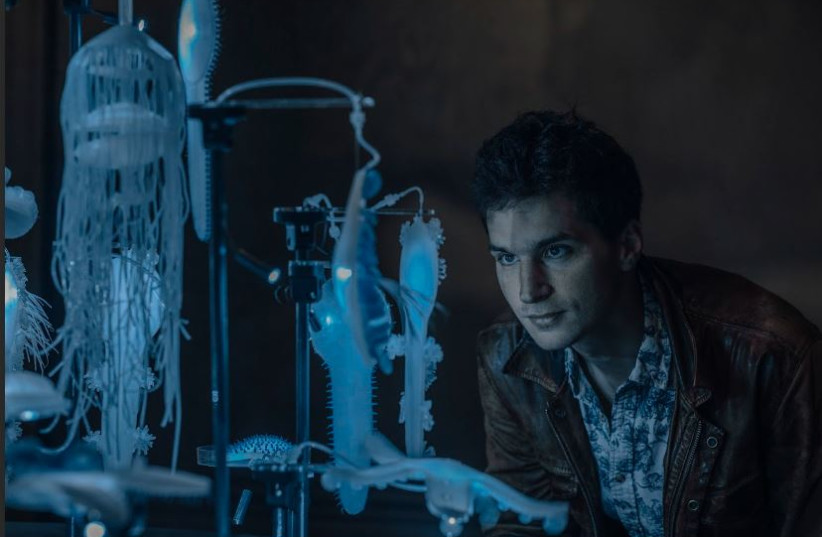Scientists around the world have been working in the field of “self-morphing” in which synthetic materials have the potential to radically change the design and manufacturing processes of complex structures and to reduce the ecological footprint they generate.
Advances in the fields of soft robotics, human/machine interfaces and wearable technologies require a new class of stretchable materials that can change shape adaptively while relying only on portable electronics for power. These materials can adapt their shapes in response to their environment.
Last year, scientists from the Hebrew University of Jerusalem (HU) created wood ink that can be extruded into flat wooden structures, self-morphing into complex 3D shapes as they dry and shrink. The technique could one day be used to make furniture or other wooden products that are shipped flat to a destination and then dried to form the desired final shape.
Innovative self-shaping materials
Now, a joint interdisciplinary research group of scientists and designers from leading universities in Israel, the US, France and Italy is presenting the innovative self-shaping materials it has developed, based on harnessing natural processes for the benefit of humankind and directed toward more natural and environmentally friendly industrial production.

They presented it at the London Design Biennale – an interactive, musical and kinetic exhibition of design and design-led innovation from around the world that is now being held and has been titled this year “The Global Game: Remapping Collaborations.” The exhibition presents various systems of self-morphing materials, which are at the very forefront of science, imitating material processes that occur in nature so as to grow and develop.
White lab coats and studious researchers with test tubes are common sights at the Automorph Network joint research group led by Prof. Eran Sharon of HU’s Racah Institute of Physics and Dr. Arielle Blonder of the Faculty of Architecture and Town Planning at the Technion-Israel Institute of Technology in Haifa, together with Benoit Roman, Lining Yao and Antonio De Simon, they formed the core of Automorph Network, with no intention of limiting themselves to the traditional methods of disseminating research knowledge.
The researchers hope the exhibition will serve as another stage in the establishment of a community of researchers and professionals from different disciplines who will work together to expand the self-morphing field. The multi-disciplinary group combines different paradigms and the unique expertise brought by each member.
The Creative Differences exhibition, which showcases the group’s developments at the London Design Biennale, was born out of a study that began in Sharon’s lab at the Hebrew University over 20 years ago.
The Automorph development was carried out with the enthusiastic support of the Technion President Prof. Uri Sivan and HU President Prof. Asher Cohen, who also personally inaugurated the opening of the exhibition in London.
Essentially, these materials are active participants in the production and shaping process, according to their inherent qualities and characteristics, in a similar way to how things happen in nature. Thus, the accepted view of material production as involving “noisy” and polluting processes can be replaced with wonder at materials that form themselves efficiently, cost-effectively and elegantly.
“The works displayed in the exhibition represent some of the values that underpin our research at the Hebrew University – an interdisciplinary collaboration that brings together excellence in a variety of fields with ecological action to create a greener and better world for future generations,” said Cohen. “I am proud that this project stems from work carried out at our university, and I am delighted to be in London to see it take on physical form at one of the most internationally respected forums in the field of design and innovation.
“This message is fully aligned with the spirit of the Technion, which binds these fields together based on an appreciation of the essential importance of the arts and humanities in technological institutions. It should also be noted that the exhibits on display at the Biennale presents new methods for sustainable production, which will reduce environmental harm and contribute to the environment and to all our lives,” added Sivan.
The exhibition presents three imaginary “landscapes” – field, city and underwater. Each environment features exhibits that self-shape before the visitors’ eyes. For example, the city environment presents materials that change under the influence of heat and have the potential to be used in the construction industry. In the underwater landscape, the ceiling is made of a material that inflates to create a complex topography that lets in light in a way that recalls the calming experience of being underwater. This material was developed as part of research conducted at a laboratory at the Sorbonne.
To expand this community of people working on self-morphing materials, a two-day workshop was held at the Biennale, including lectures from leading researchers in this field.
The second day was a hands-on workshop in using these innovative new production methods hosted by Antonio Forte from King’s College, London. With the support of PSL University from Paris and University College London, the event brought together people from different disciplines as well as students from Israel, Paris and London who were awarded scholarships to participate.
In addition to HU and the Technion, the other research centers that are involved in the project are the PMMH laboratory at the Sorbonne in Paris; the Morphing Matter laboratory at Carnegie Mellon University in Pittsburgh; and ISSA in Italy.
